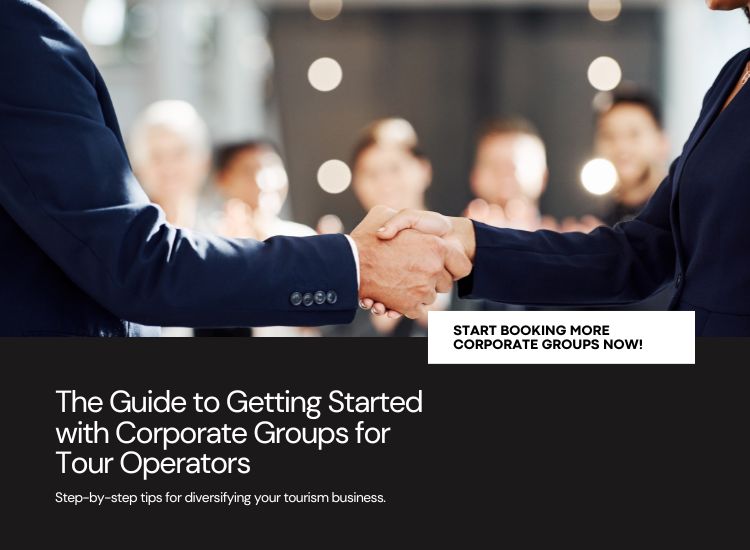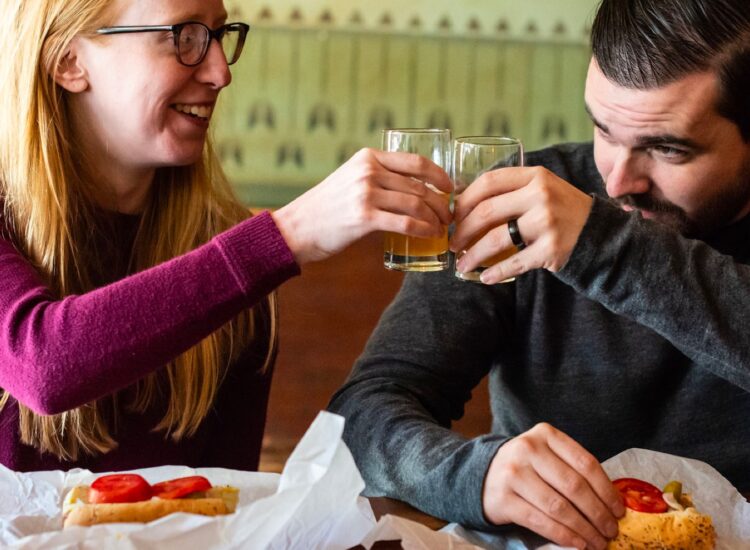One of those diversifications is strengthening your revenue from corporate tours. Possessing serious strategic advantages, corporate tours can help grow revenue while also being easier to coordinate, more fun, and creating higher profit margins through referrals and repeat groups.
Back in 2022, I left the Arival 360 Conference in Las Vegas with my ears and imagination buzzing. We’d been talking about corporate tours for the better part of a decade, but now there was real momentum.
We dug in, began to build custom frameworks for our clients so they could offer corporate tours, and taught clients how to continue building their offerings, messaging, and bottom lines. We’ve continued developing these ideas and witnessed some pretty mindblowing results.
So below, we wanted to give you a quick guide on how you can pivot to offering more corporate tours with a focus on generating high-quality, consistent revenue.
Step 1: Understand the Demand in the Corporate Market
Since the COVID-19 pandemic, corporate budgets have increasingly shifted away from traditional office expenses like rent and towards team-building activities. With the rise of distributed workforces, it’s more important than ever to keep remote employees engaged and satisfied.
This shift in focus is leading companies to invest more heavily in their organizational culture and team development.
Lisa Lavelle from Catalina Tours shared a story of guests meeting team members face-to-face for the first time during one of their tours. This trend underscores the growing need for in-person team-building events, especially as remote work becomes more prevalent.
Recent findings from McKinsey and Gallup highlight this shift:
- 35% of workers now have the capability to work from home full-time, creating a significant opportunity for companies to organize regular corporate retreats.
- 23% of employees work from home part-time, indicating a need for flexible scheduling of group events.
- 21% of remote workers report experiencing productivity loss due to isolation, further emphasizing the importance of team-building retreats.
As organizations adapt to these new dynamics, we can expect to see a continued increase in investments aimed at strengthening team cohesion and fostering a positive remote work culture.
Step 2: Consider the Financial Incentive
Transitioning to corporate groups isn’t just beneficial for mental health; it’s a strategic move that boosts the bottom line.
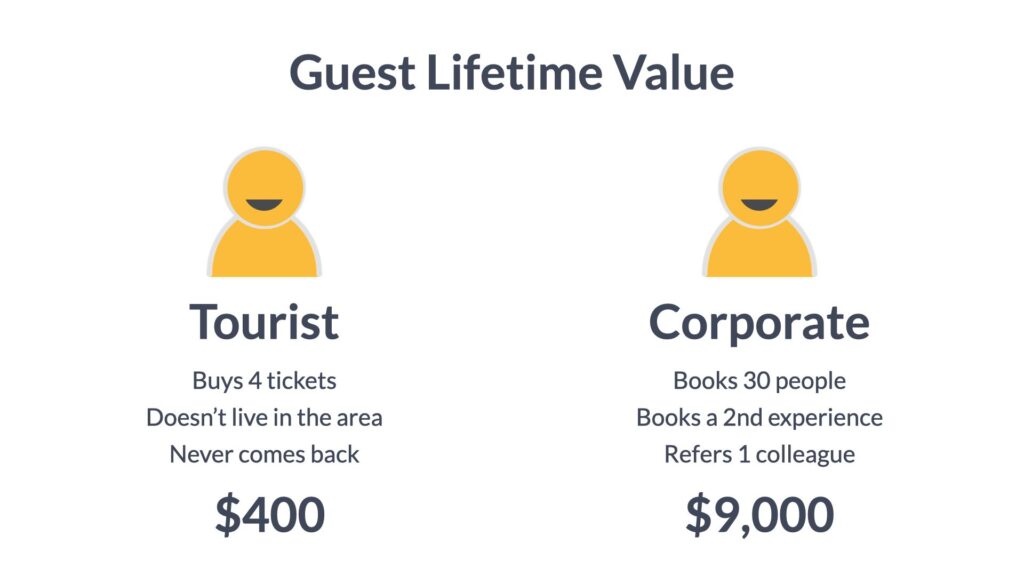
Consider the difference: a typical tourist might spend $400 on tickets and may not return, while a corporate client could spend $2,500 on a group booking.
Tourists usually finish their experience without further engagement, but corporate clients can be more profitable with the right CRM automations, leading to:
- 20% in repeat bookings
- 15% in cross-departmental bookings
- 10% in external referrals to colleagues
- 5% in individual bookings from corporate participants
Continue to offer public tours, but when it comes to investments in the growth of your business, this shift in client focus can significantly enhance profitability. Corporate guests offer a higher return on investment, bringing in larger revenue per booking and providing opportunities for predictable, future bookings.
One tour completely changed his business, increasing the revenue from corporate groups from less than 5% to over 60% today.
As more companies recognize the value of team-building activities, the demand for corporate group events is likely to rise, presenting a lucrative opportunity for tour operators.
To gauge the potential uplift in your revenue from corporate groups, follow these steps:
- Estimate the maximum number of corporate groups you could host monthly.
- Calculate the revenue for an average 20-person group.
- Multiply this by 12 for an annual projection.
Step 3: Pick your One Target Guest
Three common barriers deter tour operators from embracing corporate groups:
- Time constraints
- Lack of vendor support for large groups
- Absence of a clear path to get started
These obstacles can seem daunting, but they are surmountable with the right approach. Check out this clip below about finding and going after your One Target Guest.
Another common issue is the tendency to target corporate groups as a whole rather than focusing on individuals within those groups. A man considered one of the grandfathers of advertising had the famous quote, “We cannot go after thousands of [customers] until we learn how to win one.”
It’s crucial to remember that you’re not selling to a company; you’re selling to a person inside that company. Often, securing that first key contact is all it takes to set off a chain reaction. Find the first person you can talk to, and the rest will follow.
Instead of attempting to sell to an entire company, start with one person. Focus on planning and executing one successful sale to an individual. By simplifying your approach and targeting specific people, you can overcome these barriers and tap into the lucrative market of corporate group events.
To figure out which person, make it someone:
Step 4: Have a conversation with the person
It will be a one-sided conversation, because your web page to do all of the talking for you, but it’s a conversation nonetheless.
There’s a misconception that a lot of companies still make when building websites — they’re building them as digital stores.
I want you to build a digital salesperson.
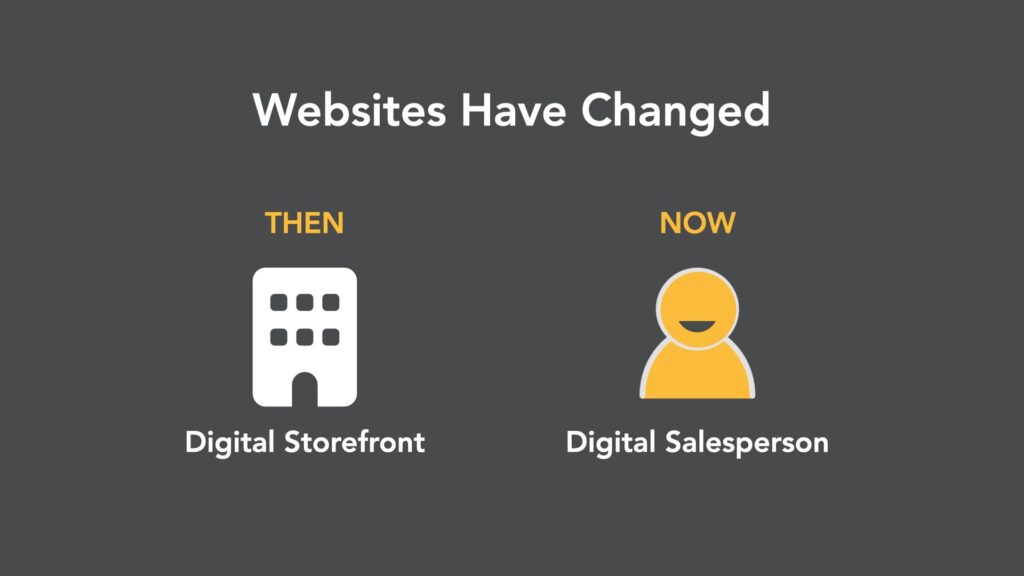
You might be wondering what’s the difference? A digital store presents all of your offerings, like shopping at a store. But a page designed like a digital salesperson takes you by the hand. Tells you all of the things you want to hear, and helps you take the next steps in your purchasing journey.
This is why you need to have a page on your website specifically for corporate groups. Not a private groups page where you talk about a private experience being great for bachelorettes, student groups, and oh! Oh yeah, corporate groups too.
No. We need to help your One Target Guest feel more seen and valued.
We need to have a better conversation with them.
We need to give corporate groups their own page.
Give your “digital salesperson website” the opportunity to have the right conversation with your One Target Potential Guest.
And when they do, don’t make your conversation about what you have to offer. The conversation I want that webpage to have…that conversation is about why that person wants to book with you.
Look at the examples below: the page on the left is more of a digital store, serving up a list of options. The page on the right, created by UpLevel Tourism, is the digital salesperson – serving up the value of the experience.
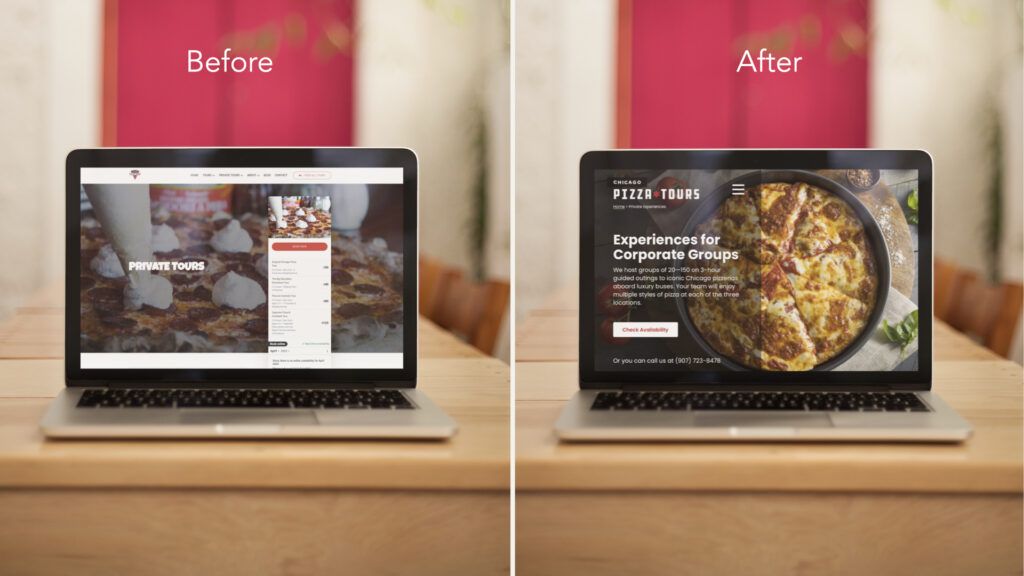
Step 5: Make it easy for someone to say “yes”
Time for a curveball: I don’t want you to sell your tours to a corporation.
Double curve: I don’t want you to offer companies a completely customized experience.
The fastball: I want you to create new packages specifically for corporate groups.
Too often, tours confuse “custom” as part of their value. Instead, I’d rather see you package your offer to solve a specific problem, rather than relying on “custom” as part of your value proposition.
Think of it like buying sandwiches for everyone at your work. You don’t want to discuss the type of meat, cheese, bread, and condiments for every sandwich. You don’t have that kind of time. And neither do the people at the corporations you’re talking to.
I want you to make it as easy as ordering a value meal. Make it as easy as possible for them to say “yes.” You can do this by creating packages tailored to their needs.
By addressing specific needs with well-defined packages, you simplify the decision-making process for your clients, making it easier for them to see the value in booking with you.
Step 6: Outreach. Outreach.
Once you have a page on your website with the right conversation, it’s time for outreach.
Analise Andrews of Key West Food Tours broke past these barriers to achieve her best month ever, in 10 years of operating her tour, thanks to a dramatic increase in revenue from corporate groups.
Corporate groups aren’t like TripAdvisor leads, we can’t wait for groups to come to us. You need to be proactive. And while many turn to SEO for such a thing, I’m going to encourage you do a little more direct outreach to this segment.
Some things to explore include:
- Reengaging past groups to refer someone new your way
- Connecting with family & friends to make sure they know about your offering
- Asking for referrals from colleagues
- Promoting your messaging as corporate group events instead of tours
- Local networking groups
Already had a few corporate tour clients? Reconnect with them for re-booking or potential referrals. You should also use content marketing to boost your visibility. Some popular types of content marketing to utilize:
- Engage past groups with new offers.
- Publish and share blogs about activities suited for corporate groups.
- Collaborate with high-ranking blogs and ask them to list your new offer.
- Use warm and cold outreach strategies on LinkedIn, including Sales Navigator.
Ensure your website has a specific page for corporate group inquiries, complete with a streamlined, low-friction submission form to funnel in leads effectively. So now….
Now, Go Get ‘Em!
Transitioning to a focus on corporate groups represents a significant opportunity for tour operators to protect their business models, creating higher margin opportunities and more direct sales.
By understanding the market, streamlining operations, effectively using marketing strategies, and focusing on the right clients, tour operators can unlock new growth and stability in the dynamic tourism industry.

